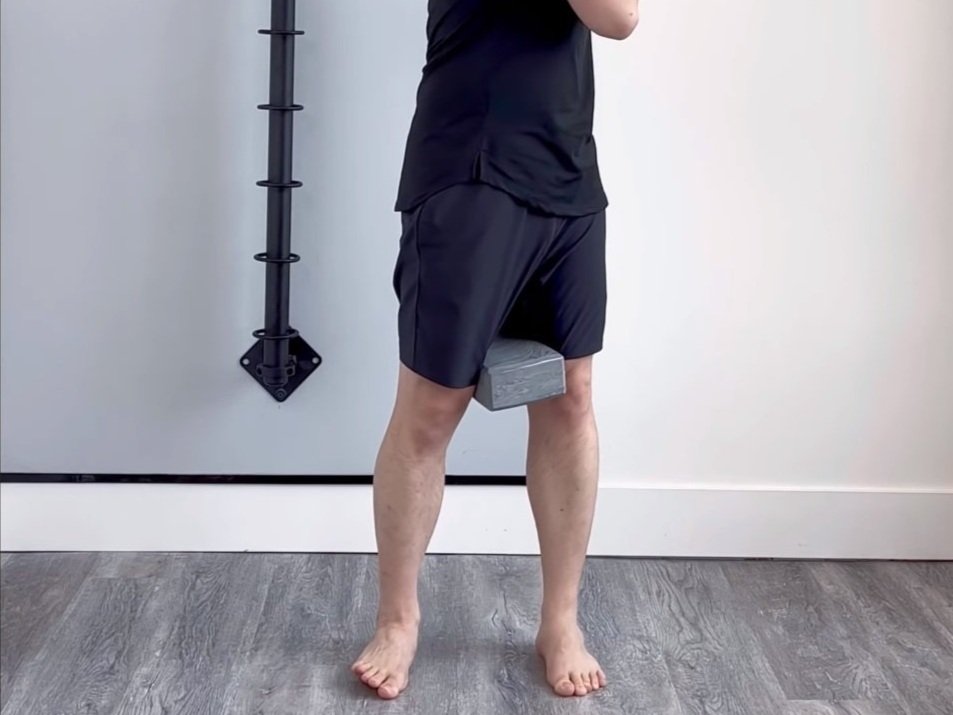Discogenic Pain
Can a disc cause pain when it’s not herniated?
Learn about discogenic back pain and why it matters.
Before we understand how the disc generates both local and referred pain, we first have to understand its anatomy and function.
What does the disc do?
Similar to a ligament, the function of a disc is to hold the vertebrae of the spine together. These discs are found throughout the spine including the cervical spine, thoracic spine, and lumbar spine. They act as shock absorbers against downward forces (such as gravity), which are also known as axial loads. It does this in an up right position. The disc also functions as a pivot point in the spine to allow bending and twisting.
What is the anatomy of a disc?
The disc has three elements, the vertebral end plate, the annulus fibrosus, and the nucleus pulposus.
The nucleus pulposus is primarily composed of 77% water and is found in the center of the disc. It is a hydrated gelatinous structure. The other 23% of the disc is made of a nuclear matrix composed of a proteoglycan aggrecan, type 2 collagen, and elastin. Overall, the nucleus pulposus accounts for 40% of the overall bulk of the disc. Cadaver studies show that there is no disctint border between the nucleus and the annulus fibrosus.
The annulus fibrosus is formed of 15 to 25 lamellae which are sheets made of collagen. The lamellae are adhered together by proteoglycans. Although made of similar substances as the nucleus pulposus, the overall ratio of them is different. 70% of the annulus fibrosus is water. The 30% dry component is made of collagen, proteoglycans, and elastic fibers (which attach the disc to the end plates).
Finally, the end plates are 3 mm of hyaline cartilage that are considered to be part of the disc and not the vertebral body. Their fibers are strongly interwoven into the annulus of the disc. Of the three components of a disc, the end plates are the weakest point. The end plates are made of the same biochemical substances and concentration scheme as the rest of the disc. This allows the diffusion of nutrients from the bone to the disc.
Sharpey’s Fibers are found at the ring apophysis (outer periphery of the vertebral body). These are outer fibers of the disc that anchor to the bone. This is relevant as osteophytes might arise from repetitive pulling and tugging of the Sharpey’s Fibers.
More about the annulus fibrosus
The annulus fibrosus can be further divided into two regions: the outer fibers and inner fibers. The outer fibers are mostly made of Type 2 collagen while the inner fibers are mostly made of Type 1. The layers of fibers pass at alternating 25-30 degree angle to each other (at opposite directions) which what allows the disc to absorb axial loads efficiently.
The orientation of the annulus fibrosus is important to remember as it does affect the function of the disc. Due to the relative 120 degree angle of the collagen fibers, when the spine is rotated only 50% of the collagen fibers are in the correct orientation to handle forces. This rotation causes the other 50% of the fibers to become slack. This means compressive forces in rotation will be shock absorbed less efficiently by your annulus.
What is a disc made of?
The disc is made of 3 main cellular components. It is made of collagen, proteoglycans and other cellular components.
Collagen is responsible for up to 70% of the dry weight of the outer annulus and less than 20% of the dry weight of the nucleus. This protein gives the disc tensile strength.
Proteoglycans are proteins that are there to bind water in the disc. This provides the disc stiffness, resilience and hydration. It forms 3% of the outer annulus and 50% of the nucleus pulposus. The proteoglycan aggrecan can trap over 500 times its weight in water.
Cellular components form only about 1% of the disc. These function to create and breakdown the cellular matrix of the disc (resembling chondrocytes).
Innervation of the disc and pain
The disc is innervated by the recurrent meningeal nerve (aka sinuvertebral nerve) along the posterior annulus and posterior longitudinal ligament. The grey rami communicante nerve innervates the lateral and anterior aspects of the disc.
In a healthy disc, the hydrostatic pressure of the disc prevents the nerves from growing into the layers of the disc. This is important as the inner disc layers are otherwise not innervated which means they cannot trigger pain. However, when the disc becomes degenerated (leading to dehydration of the disc), the hydrostatic pressure decreases leading to growing of nerve endings into the disc. This is relevant as these nerve endings are sensitive and can trigger pain.
Pain can also occur when a radial annular tear occurs in the outer 1/3 of the annulus. This causes the sinuvertebral nerve endings to be exposed to the degenerating nuclear material of the disc. Since these nerve endings are high in pain receptors, pain can occur as they come into contact with irritating chemicals from the degenerating disc.
In both of these circumstances, pain can be caused by the disc without any disc herniation or compression of the nerve roots.
Disc nutrition
The disc is considered to be the largest avascular structure in the body. This means that the healthy disc gets no blood flow. This happens as the aggrecans prevent the growth of nerves and blood vessels into the disc (due to the hydrostatic pressure). So how does the disc get nutrition?
The disc primarily gets nutrition through diffusion. Nutrients are diffused from the vertebral body (which has good vasculature) through the endplate to the nucleus pulposus. This depends on end plate permeability.
How does the disc degenerate?
Disc degeneration can occurs with a decrease in nutritional supply. With aging, the endplate permeability does naturally decrease leading to decreased nutrient diffusion into the disc. This can lead to the accumulation of byproduct wastes such as lactate. As a result, oxygen levels can also decrease in the disc leading to anaerobic metabolism. This then again increases lactate production which changes the pH of the disc to fall as low as 6.4 (making the disc slightly acidic).
Degeneration of the disc also causes a decrease in proteoglycans, disorganization of the collagen network, and permeation of the blood vessels into the disc, affecting the integrity of the disc. Of these features, the loss of proteoglycans and its subsequent lost of hydrostatic pressure is the main feature that main cause pain as it allows ingrowth of pain-sensitive nerve endings into the disc.
Other risk factors of disc degeneration include:
End plate calcification
Smoking
Diabetes
Exposure to vibration (ie truck drivers, bus drivers, taxi drivers etc.)
Why does disc hydrostatic pressure matter?
Loss of hydrostatic pressure in the disc can also cause further decrease of the proteoglycan aggrecan creating a vicious cycle. This is because the disc cells may require a constant hydrostatic pressure of 3 atm to function normally.
Loss of hydrostatic pressure can also cause a change in the disc’s ability to tolerate compressive forces evenly. A healthy disc can evenly distribute vertical and horizontal forces along the disc. In degenerated discs, a shift in pressure is observed which causes the load to be distributed towards the outer layers instead (which cause more load and stress).
Summary
To answer the initial question, yes the disc can cause pain without being herniated. This is due to the loss of hydrostatic pressure in the disc which allows ingrowth of pain-sensitive nerves. Luckily this can be reversed within certain limits with lifestyle modification and pain can be managed with treatment. To get started on your recovery process contact your health care provider. To visit a Markham massage therapist, physiotherapist or chiropractor, click the button below to check in at the Rehab hero clinic.
Written by:
Dr. David Song, Chiropractor, Rehab Coach






















